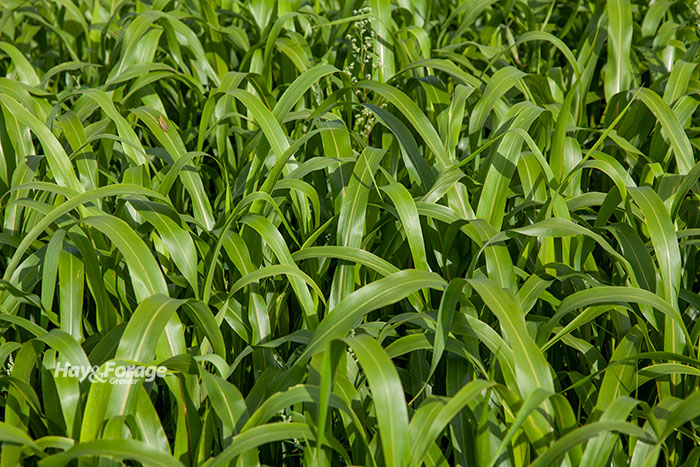
Like any crop, corn for silage doesn’t always grow to realize its full production potential. Whether wet conditions delay planting or drought weaken yields, producers need a backup plan in case corn silage production goes awry, and sorghum might be a solution.
In a recent episode of the Dairy Science Digest podcast, Luiz Ferraretto with the University of Wisconsin-Madison suggested sorghum could be an alternative for corn silage in dairy rations. To investigate this hypothesis, he conducted a 12-year study in central Florida to collect data on the dry matter yield and nutrient composition of 300 forage sorghum hybrids and 137 sorghum-sudangrass hybrids.
“Our main goal was to measure nutrient composition — crude protein, neutral detergent fiber (NDF), starch, ash — but we also wanted to understand NDF digestibility (NDFD),” the extension dairy specialist said. “We analyzed in vitro NDFD, and with this information we were able to start predicting the true value of the forage for lactating dairy cows.”
Forage sorghum and sorghum-sudangrass are two of the most common sorghum types that are grown on farms. The former offers higher levels of grain, and the latter is more often utilized for hay or seeded in pastures. Nonetheless, planting methods were the same for all hybrids in the experiment, and crops were harvested at approximately 32% moisture and at a cutting height of about 9 inches.
In addition to the different hybrids, the effects of planting date and the brown midrib (BMR) trait on forage quality were also evaluated. Each hybrid was a part of two planting date trials — spring planting in April and summer planting in July — and of the 437 total hybrids, 199 were BMR.
Spring plantings yielded more
Yields for sorghum-sudangrass hybrids were greater than those of forage sorghum hybrids when crops were planted in the spring, but there was no significant difference in yields when crops were planted in the summer. Moreover, yields were lower for all hybrids grown in the summer compared to the spring; however, Ferraretto noted it could still be advantageous to plant sorghum as a second crop in the summer to bolster feed supplies.
“Even though sorghum production from summer plantings yields less biomass and likely has lower nutritive value than sorghum grown in the spring, having sorghum in the summer is still a great benefit for producers who double crop because those plants are extremely tolerant and they produce very well,” Ferraretto stated.
Sorghum hybrids with the BMR trait had lower yields than non-BMR hybrids, regardless of planting date or sorghum hybrid. Even so, the NDFD in BMR sorghum hybrids was similar to that of corn silage.
“The NDFD that we observed from the BMR sorghum in our studies was about 50%. For corn silage, we typically see 55% to 60% NDFD,” Ferraretto noted. “The BMR sorghum is not that far behind, and I think we can formulate very good diets with this type of crop.”
Consider the setbacks
Greater NDFD means animals will be able to consume more feed to meet their energy needs, but this can become a challenge because BMR hybrids produce less yield. To ensure there is enough forage available for an entire herd, Ferraretto recommended allocating BMR sorghum to higher producing cows and growing non-BMR sorghum for other animals.
Another issue that arises when substituting sorghum for corn silage is starch content. The average starch content of all sorghum plants in the study was 16% to 17%, whereas the starch content of corn silage is typically between 30% to 40%. If sorghum is used to replace any percentage of corn silage, rations must be adjusted accordingly and supplemented if necessary.
Overall, Ferraretto said sorghum has the potential to substitute for corn silage to some extent during difficult growing years. He suggested working with crop specialists and nutritionists to determine the best way to successfully integrate this crop into a feeding program.

Amber Friedrichsen is the 2022 Hay & Forage Grower editorial intern. She currently attends Iowa State University where she is majoring in agriculture and life sciences education-communications and agronomy. Friedrichsen grew up on her family’s diversified crop and livestock farm near Clinton, Iowa.

